Stuff
Beginning tomorrow the BAA Blog will be going to every other day.
The Streak
Today makes two hundred seventy-four days in a row with a new educational blog post! This one took more than minutes to prepare. This streak is over 🙂
Patrick and Robin Sparkman
This is a shout-out to my good friends Patrick and Robin Sparkman of San Diego, CA. I cannot remember when I first met Patrick — it might have been as long ago as a Jamaica Bay Wildlife Refuge Shorebird IPT … Patrick has been a nice guy for at least as long as I have known him :). Robin and Patrick have done the Galapagos, Tanzania, The Falklands, and Svalbard with me along with a few US-based IPTs. Here are two of my most wonderful Sparkyman memories:
- 1-I decided to skip a Galapagos landing and Patrick returned with the world’s best Dark-billed Cuckoo image.
- 2-I decided not to hike up the steep hill to try for Dovekies in Svalbard after striking out completely the night before. I heard laughing and giggling in the parking lot at 4:00am and looked out the window to see Patrick and our guide celebrating their success. (You can read the story of my Dovekie redemption here but the photo links were lost a few years back.)
Do you detect a common theme above?
I have stayed with Patrick and Robin often at their home on extended San Diego visits. Their hospitality has always been amazing and believe me, I am not the world’s easiest house guest! Aside from being a great friend, Patrick has helped me for years with a variety of digital photography and gear technical issues. He is a genie’s ass when it comes to that stuff. And as many of you know, he is a skilled photographer. Whenever I visit San Diego, seeing (and photographing and dining with) Patrick and Robin is one of the highlights of the trip. Patrick is a great chef and a world class barbecue expert, and Robin makes some killer salads. The only negative in our relationship is that they always goad me into visiting the great ice cream shop near their home! That said, Patrick has been the closest thing to a brother that I have ever had. Thanks to Patrick and Robin for being Patrick and Robin.
How About You?
Over the years I have made many great friends through photography. If you have done the same, we would love to hear your story.
|
|
The Nikon AF Fine-tune e-GuidePlease click here to purchase. |
The Nikon AF Fine-tune e-Guide: $30.00 (or free to some–see below for details on that).
by Arthur Morris/BIRDS AS ART and Patrick Sparkman
There is lots of misinformation out there on the Nikon Automatic AF Fine-tune feature. Much of that involves vast over-simplifications. Patrick Sparkman and I developed a way of using the Automatic Fine-tune feature effectively with the D5, D500, the D7500, and the D850. Patrick, however, was on a roll and perfected a method for using the Focus Peaking feature available only on the D850 to quickly and accurately micro-adjust all lenses and TC-Es with your D-850. If you own a D850 you should be using D850 Focus Peaking AF Fine-tune rather than Nikon Automatic AF Fine-tune. It is faster and easier and more accurate. While there is some halfway decent info online with regards to Nikon Automatic Fine-tune feature, I have never seen a word about using the amazing D850 Focus Peaking capabilities to determine an accurate AF Fine-tune value. You can thank Patrick Sparkman for rectifying that situation.
With both Nikon Automatic AF Fine-tune and D850 Focus Peaking AF Fine-tune, the use of a LensAlign Mark II unit is recommended as best by far for accurate results and thus, this guide is written reflecting that. Taping a sheet of newsprint on a wall or using the FoCal kit does not assure you of the True Parallel Alignment (TPA) that is guaranteed when you set up your LensAlign properly. Without TPA your results will be off anywhere from a little to a lot. You can purchase the LensAlign Mark II alone here. Or you can purchase the LensAlign/FocusTune combo here. If you do not own either of those we suggest that you decide which to purchase after reading this guide through once. That said, we recommend the LensAlign/FocusTune combo for reasons that will become obvious as you make your way though the guide.
Do understand that much of the set-up information included in the Nikon AF Fine-tune e-Guide is by necessity a duplication of information included in The LensAlign/FocusTune Micro-Adjusting Tutorial e-Guide.
Please click here to purchase.
If you have spent $2,000+ on Nikon gear (correctly) using my affiliate links, shoot me a copy of your receipt via e-mail so that I can send you your free PDF.
Thanks to the Patient Ones …
Lately, I have gotten more than a bit behind on e-mails; many thanks for your patience. I should be completely caught up soon.
BIRDS AS ART
BIRDS AS ART is registered in the U.S. Patent and Trademark Office.
Money Saving Reminder
If you need a hot photo item that is out of stock at B&H, would enjoy free overnight shipping, and would like a $50 discount on your first purchase, click here to order and enter the coupon code BIRDSASART at checkout. If you are looking to strike a deal on Canon or Nikon gear (including the big telephotos) or on a multiple item order, contact Steve Elkins via e-mail or on his cell at (479) 381-2592 (Eastern time) and be sure to mention your BIRDSASART coupon code and use it for your online order. Patrick Sparkman saved $350 on a recent purchase!


Booking.Com
Several folks on the DeSoto IPT used the Booking.Com link below, got great rates, and saved a handsome $25.00 in the process. If you too would like to give Booking.Com a shot, click here and to earn a $25 reward on your first booking. Thanks to the many who have already tried and used this great service.
Gear Questions and Advice
Too many folks attending BAA IPTs and dozens of photographers whom I see in the field and on BPN, are–out of ignorance–using the wrong gear especially when it comes to tripods and more especially, tripod heads… Please know that I am always glad to answer your gear questions via e-mail. Those questions might deal with systems, camera bodies, accessories, and/or lens choices and decisions.
The Nikon Dummy Quiz Answer
In the The Nikon Dummy Quiz. Me Being the Nikon Dummy … blog post here, I described a specific situation that occurred in the field at Gatorland and totally mystified me … While working in Manual Mode I kept raising the ISO and lowering the shutter speed while not changing the fact that the histogram continued to show about a stop of underexposure …
Brendan posted the correct answer on April 27, 2018 at 7:53 am:
Maybe you were accidentally in “auto-iso” mode and were setting an ISO that was not the actual ISO the camera was using.
Since I did not want to spoil the fun so early in the game I chimed in with this:
avatarArthur Morris/BIRDS AS ART on April 27, 2018 at 12:04 pm:|
Maybe not …
thanks with love, artie
My less than definitive answer gave lots of folks enough rope with which to hang themselves.
Then Phil Thach wrote at April 27, 2018 at 3:21 pm:
Seems like “ISO ???” must be some sort of hint.
Arthur Morris/BIRDS AS ART replied at April 27, 2018 at 8:09 pm:
You are correct sir; there-in lies the mystery 🙂
with love, artie
In the Stuff section of the next days blog post I wrote:
The right answer is right there but it looks as if I have tricked everyone …
Then Warren Hatch posted this on April 28, 2018 at 9:55 am:
One way this dummy could accomplish the feat is a combination of what has been suggested. Auto-ISO AND Exposure Compensation at -1 would do the trick. You need to have both (mis-) settings in order to cause the behavior you are describing. One or the other alone would not result in the underexposure you’ve described.
Arthur Morris/BIRDS AS ART replied on April 28, 2018 at 11:35 am:
Good thinking; you are almost there but for the EC. But I gotta say that Brendan (April 27, 2018 at 7:53 am) is a pretty smart guy. And good on you for seeing through my trick answer 🙂
with love, artie
ps: What if I needed +1 1/3 and I was at zero … What would the results look like?
After 30 minutes of being mystified as to how my results were so different from what John Dupps’ was seeing with his histograms, I took a closer look and saw with chagrin that I had accidentally set Auto ISO. With my EC set to zero while working in Manual mode, the system would lower the ISO that I set to give results at zero EC no matter the shutter speed or aperture that I had set. So when I got up to ISO 3200 at 1/80sec. the system would simply lower the ISO to reflect the zero EC that was set. In this case that turned out to be ISO 180!
As things turned out the reason that each images was a bit more than one stop under-exposed was that I should have been at + 1/3 stops EC on average with all that white in the shade …
|
|
|
Like the Nikon Dummy image, this image was created on the 1st morning of the Gatorland IPT with the Induro GIT 304L/Mongoose M3.6-mounted Nikon AF-S NIKKOR 80-400mm f/4.5-5.6G ED VR lens (at 290mm) and the mega mega-pixel Nikon D850 DSLR.. ISO 1000. Matrix metering +2/3 stop (should have been at least +1 1/3 stops): 1/500 sec. at f/6.3 in Manual mode. AUTO1WB at 9:26am in the shade on a clear, sunny day. Center d-25, Shutter Button/Continuous (AI Servo in Canon) AF was active at the moment of exposure. The selected AF point was on the cheek of the closest chick, right on the same plane as its eye. Focus Peaking AF Fine-tune value: a significant +9. Snowy Egret, three chicks in the nest |
An Important Nikon Camera Body Question
As I own two D850 bodies I was curious to see if I used the same body to create both today’s featured image and the Nikon Dummy image, or if I switched bodies when I went from the 200-500 to the 80-400. If I knew that I used different bodies then there is the chance that the Auto ISO was a left-over setting. Here is my problem. All of my D5 file names begin with _DSC. And all of my D850 file names begin with _DSC. I have searched both View NX-i and Nikon Capture NX-D to see if I could find a camera serial number so that I can differentiate between my two D850 bodies but cannot find a spot that shows the camera serial number or other identifying code. If you know how to find that information please leave a comment.
Suggestions?
If you think that this image could have been improved during the post-processing, please do share your thoughts.
|
|
|
San Diego offers a wealth of very attractive natural history subjects, including and especially the Pacific race of California Brown Pelican. With annual visits spanning more than four decades, I have lots of photographic experience there … Click on the composite to enjoy a larger version. |
2019 San Diego 4 1/2-DAY BIRDS AS ART Instructional Photo-Tour (IPT) SUN JAN 20, 2019 thru and including the morning session on THURS JAN 24: 4 1/2 days: $2099.
(Limit: 10)
Introductory Meet and Greet at 7:00pm on the evening before the IPT begins; SAT JAN 19, 2019.
Please see the Dancing Grebe Morning Add-On Info below
Join me in San Diego to photograph the spectacular breeding plumage Brown Pelicans with their fire-engine red and olive green bill pouches; Brandt’s (nesting with eggs and possibly chicks) and Double-crested Cormorants; breeding plumage Wood and Ring-necked Duck; other duck species possible including Lesser Scaup, Redhead, and Surf Scoter; a variety of gulls including Western, California, and the gorgeous Heermann’s, all in full breeding plumage; shorebirds including Marbled Godwit, Willet, Sanderling and Black-bellied Plover; many others are possible including Least, Western, and Spotted Sandpiper, Whimbrel, Black and Ruddy Turnstone, Semipalmated Plover, and Surfbird; Harbor Seals (depending on the current regulations) and California Sea Lions; and Bird of Paradise flowers. And as you can see by studying the IPT cards, there are some nice bird-scape and landscape opportunities as well. Not to mention a ton of excellent flight photography opportunities and instruction.
Please note: where permitted and on occasion, ducks and gulls will be attracted (or re-located) with offerings of grains and healthy breads.
Learning Exposure, Whether You Like It Or Not
Whether you like it or not, we will be beating the subject of exposure like a dead horse. In every new situation you will hear my thoughts on the exposure situation along with my thoughts on both Nikon and Canon histograms and the subject of blinkies. Whether you like it or not, you will learn to work in manual mode and to get the right exposure every time as long as a bird gives you ten seconds with the light constant.And you will learn what to do when the light is changing constantly. What you learn about exposure will be one of the great take-aways on every IPT.
|
|
|
Though the pelicans will be the stars of the show on this IPT, there will be many other handsome and captivating subjects in wonderful settings. Click on the composite to enjoy a larger version. |
It Ain’t Just Pelicans
With gorgeous subjects just sitting there waiting to have their pictures taken, photographing the pelicans on the cliffs is about as easy as nature photography gets. With the winds from the east almost every morning there is usually some excellent flight photography as well. And the pelicans are almost always doing something interesting: preening, scratching, bill pouch cleaning, or squabbling. And then there are those crazy head throws that are thought to be a form of intra-flock communication. You will be guided as to how to make the best of all of those opportunities. And depending on the weather and local conditions and tides, there are a variety of fabulous photo chances available in and around San Diego.
|
Did I mention that there are wealth of great birds and natural history subjects in San Diego in winter? Click on the composite to enjoy a larger version. |
The San Diego Details
This IPT will include five 3 1/2 hour morning photo sessions, four 2 1/2 hour afternoon photo sessions, four lunches, and after-lunch image review and Photoshop sessions. To ensure early starts, breakfasts will be your responsibility. An so that we can get some sleep, dinners will be on your own.
A $599 non-refundable deposit is required to hold your slot for this IPT. You can send a check (made out to “Arthur Morris) to us at BIRDS AS ART, PO Box 7245, Indian Lake Estates, FL, 3385, or call Jim or Jennifer at the office with a credit card at 863-692-0906. Your balance, payable only by check, will be due on 10/11//2018. If we do not receive your check for the balance on or before the due date we will try to fill your spot from the waiting list. Please print, complete, and sign the form that is linked to here and shoot it to us along with your deposit check. If you register by phone, please print, complete and sign the form as noted above and either mail it to us or e-mail the scan. If you have any questions, please feel free to contact me via e-mail.
|
Variety is surely the spice of life in San Diego. Click on the composite to enjoy a larger version. |
Getting Up Early and Staying Out Late
On all BIRDS AS ART IPTS including and especially the San Diego IPT, we get into the field early to take advantage of unique and often spectacular lighting conditions and we stay out late to maximize the chances of killer light and glorious sunset silhouette situations. We often arrive at the cliffs a full hour before anyone else shows up to check out the land/sea scape opportunities.
|
This image was created in San Diego, CA with the Induro GIT 304L/Mongoose M3.6-mounted Canon EF 500mm f/4L IS II USM lens, the Canon Extender EF 1.4X III, and the simply amazing, astounding, mega mega-pixel Canon EOS 5DS R. ISO 500. Evaluative metering -2/3 stop: 1/2500 sec. at f/6.3 in Av mode. AWB. 61-Point (Automatic selection)/AI Servo/Shutter Button AF as originally framed was active at the moment of exposure (as is always best when photographing moving subjects). Though the optimized image above was a healthy crop from the original the result was a high quality 148+ MB 16-bit file. Click on the image to see a larger version. The AF system selected two AF points, one above the other, between the two birds;the eye of the bird on our right is razor sharp. Clarke’s X Western Grebe courtship rush |
The Dancing Grebe Add-On. FRI JAN 25, 2019: $399.
Those registering for the 2019 San Diego IPT might wish to join me for the Dancing Grebe Add-On Morning as above. Please read the details carefully. You will need to wade at least mid-thigh deep with your tripod over an uneven bottom. Lightweight chest waders are advised. Long lenses are needed; a 100-400 will not cut it at this spot, even with a TC. Chances at this location (easily accessible from the IPT hotel), vary from day to day so there will be no guarantees. But when those grebes dance, it can be an amazing rush. We may also enjoy chances to photograph both species, Western and Clarke’s Grebes, at fairly close range.
Help Support the Blog
Please help support my (stupendous) efforts here on the blog by remembering to click on the logo link above each time that you shop Amazon. That would be greatly appreciated. There is no problem using your Prime account; just click on the link and log into your Prime account. With love, artie
If In Doubt …
If in doubt about using the BAA B&H affiliate link correctly, you can always start your search by clicking here. Please note that the tracking is invisible. Web orders only. Please, however, remember to shoot me your receipt via e-mail.




Please Remember to use my Affiliate Links and to Visit the New BAA Online Store 🙂
To show your appreciation for my continuing efforts here, we ask, as always, that you get in the habit of using my B&H affiliate links on the right side of the blog for all of your photo and electronics purchases. Please check the availability of all photographic accessories in the New BIRDS AS ART Online Store, especially the Mongoose M3.6 tripod head, Wimberley lens plates, Delkin flash cards and accessories, and LensCoat stuff.
As always, we sell only what I have used, have tested, and can depend on. We will not sell you junk. We know what you need to make creating great images easy and fun. And please remember that I am always glad to answer your gear questions via e-mail.
I would of course appreciate your using our B&H affiliate links for all of your major gear, video, and electronic purchases. For the photographic stuff mentioned in the paragraph above, and for everything else in the new store, we, meaning BAA, would of course greatly appreciate your business. Here is a huge thank you to the many who have been using our links on a regular basis and those who will be visiting the New BIRDS AS ART Online Store as well.
Be sure to like and follow BAA on Facebook by clicking on the logo link upper right. Tanks a stack.
Typos
In all blog posts and Bulletins, feel free to e-mail or to leave a comment regarding any typos or errors. Just be right :).

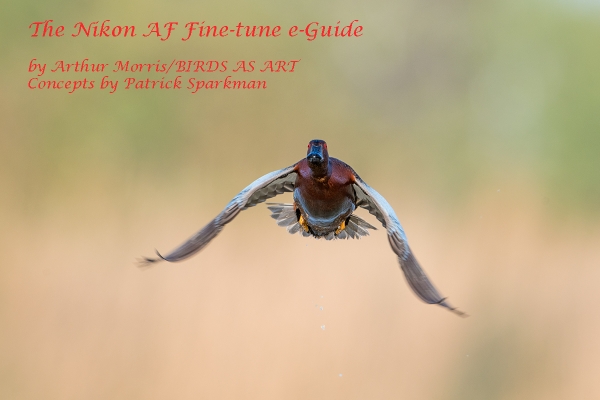
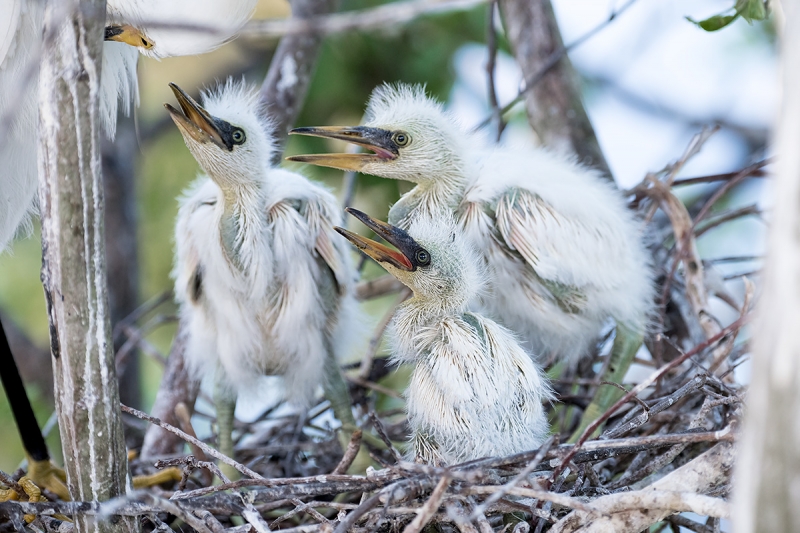
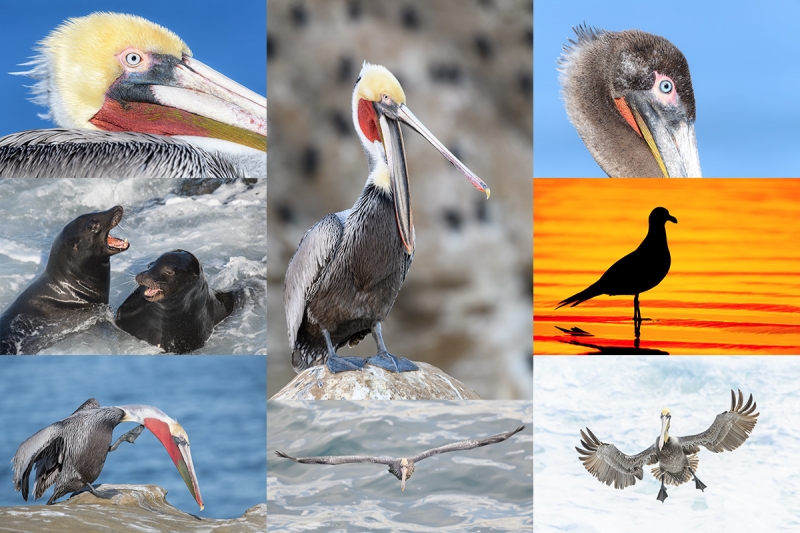
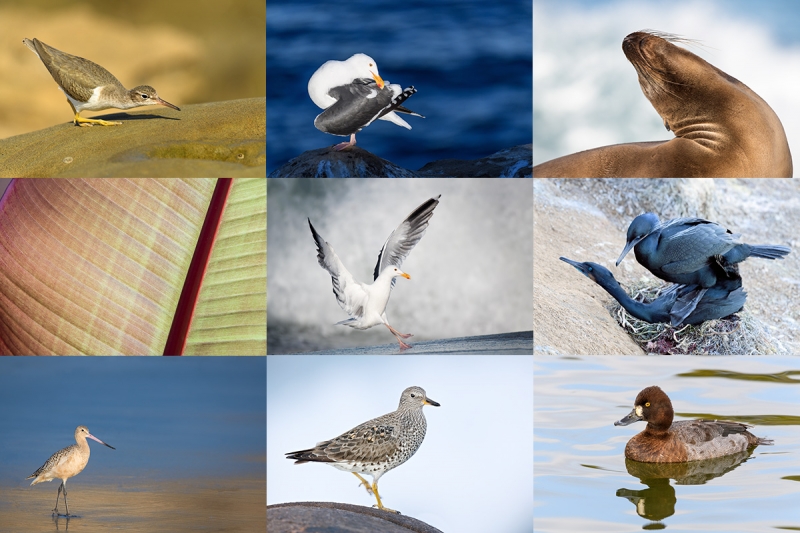


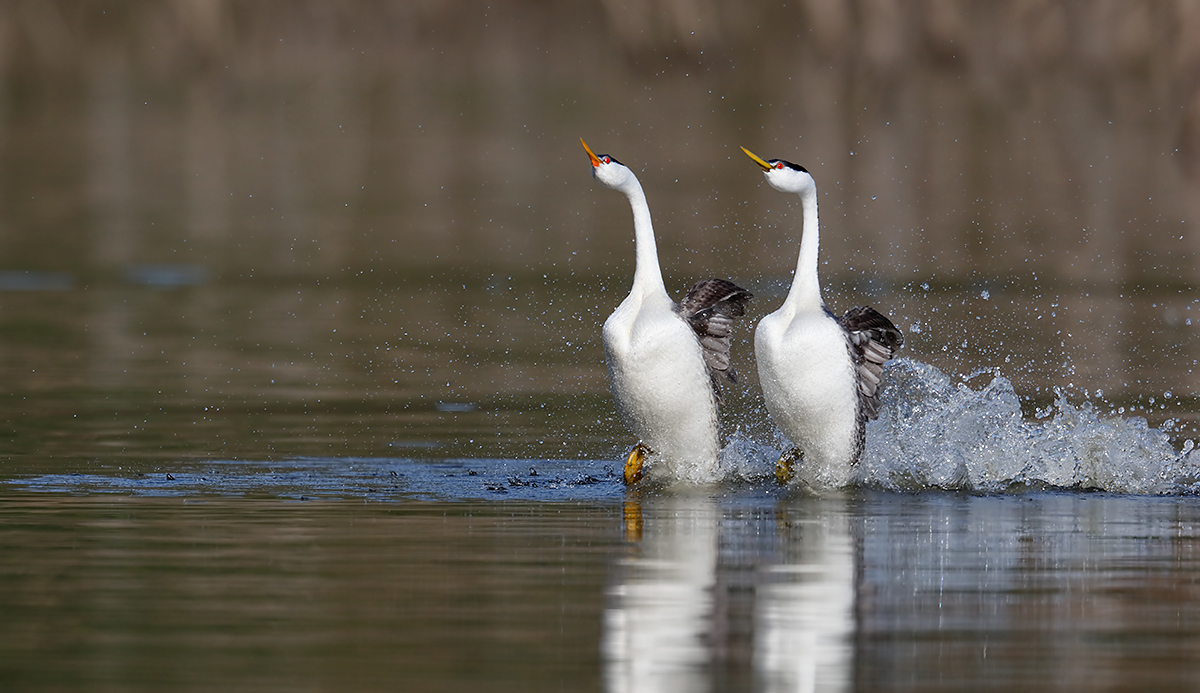













Artie, in Photo Mechanic you can choose to sort all photos by camera model. There is a dropdown on the toolbar that by default shows up as “Capture time”. If you click on the arrow, lots of other choices show up as well, including “Arrangement/sort by {model}.
Thanks Beverly. That I knew; but it will not separate two different cameras of the same model such as my main D850 and my backup D-850. Do see Peter Llewellyn’s comment below it solves that problem.
with love, artie
Artie, we are humbled by your amazing, and kind words, although we know that we have gotten at least as much out of our relationship with you…if not more! Those are two of thousands of great memories that I have from our relationship which now spans 19 years. Yes, we met at Jamaica Bay in 1999 where you taught me to crawl around in the mud with my 600 f4 and to point my shadow at the bird! I will never forget that, or the friendship that we have developed in the ensuing years. You are like a brother to me as well. Just wish that we did not live on either side of the continent.
Thanks for the tears of joy.
with love, a
Hi Artie,
Do you have he option in Nikon to change the file names like you can on Canon. I have 2 5DM4’s and I give them each a different file name and then when I look at the images I can see right away which camera they are made with.
Lewis
Yes, you can do that with Nikon. See Andrew’s comment below. My Canon camera bodies always came out of the box with a unique code consisting of two capital letters and one numeral like W5A or P7A.
with love, artie
Every other day is plenty and appreciated.
Hi Artie. As a long time Nikon and Photomechanic user may I suggest simply open the images to the viewer in PM to view the camera serial number. You suggest in a previous answer you cannot do that in PM but you certainly can. Go to Edit/Settings/Set Info Text and click on variables you can then add any number of info items to appear in the viewer window. The ones you want are found under Camera as model,model and serialnum
I can send you a screen shot if that would assist
Peter Llewellyn
Brilliant. I will try it and get back to the group. Many thanks, artie
Hi, Artie. Thanks and great images. It was a bit of a shock to see the streak end but it more than makes sense. Even every other day is more than reasonable people could expect. As for making friends through photography, too many to list here but for sure you and wonderful people I’ve met on your IPTs and through your blogs. Many thanks to you and all of them, including the ones I know only through your posting, for enriching my life and improving my photography.
Artie, I this an April fools day joke a month late? I remember the time you said you were quitting, I fell right into the trap. Can’t help you with Nikon stuff, but I have to admit, the IQ on the 850 it pretty GD amazing. Am I tempted………….?
Hope you are healing!
I’m not taking any credit as a “smart guy” – I’m just very familiar with that mistake, since I’ve made it myself many times!
Fabulous images again. Those egret babes are amazing…
Well done my friend; it took me too long to figure it out but it will not the next time!
Glad that you like the photo.
with love, artie
” But I am never going anywhere near LightRoom as I am in fear of having to import anything ” – Why fear importing into Lightroom? Your files are not moved – they stay right where you want them.
I’ve seen too many people in tears 🙂
with love, artie
Open original RAW file in photoshop, select “File Info” from the File menu, select “camera data” in the window that pops up and the serial number of the camera is shown among the data on the right.
I do what has already been suggested – change the filename prefix from DSC to, for example, D8A and D8B (or 81A and 81B) to distinguish between my two D810 bodies.
Thanks. I wound up doing that. But you need to convert theNEF file first as far as I know.
with love, artie
Yes, a RAW file will automatically open in ACR (Adobe Camera Raw) when one selects “open” from inside photoshop – at which point the conversion will be done – and then can be transferred into photoshop by clicking on open in ACR. Since I don’t have and don’t know about Photo Mechanic, I was using “original RAW file” to indicate that it should not have been touched by another program beforehand and certainly not converted to a JPEG as some programs tend to strip or mess with the EXIF data.
Your old friend BreezeBrowser would have given you the info too. I use Exiftool – which is a bit unwieldy but seems to be reading EXIF data from Nikon files pretty reliably. Not sure there’s a Mac version of it though.
Thanks Dieter. As I had hoped, the info was there all along in Photoshop once you convert the RAW file. Like all good browsing programs you are seeing the embedded JPEGs when picking your keepers.
with love, artie
Hi Artie,
To change the file name go to the Photo Shooting Menu and then to File Naming. You can enter something like 850-xxx.
John Patton
Thank you John. But as noted below, a dumb way to do things by Nikon 🙂
with love, artie
Artie,
In addition to lightroom, bridge gives both the model and serial number.
Tom
Thanks Tom. I should be able to do that. How do I open Bridge?
Hope that you and Rosie are doing great.
with love, artie
You can change the default name of the files for each camera body so that you will know exactly which D850 created the shot. My D800 files start with _DSC but my D500 images begin with _ASM because I changed it to differentiate between the two bodies..
Thanks Andrew. Where do I do that on the Menu?
Canon has a very simple system whereby each camera body is identified individually by a series of capital letters and numerals when the camera comes out of the box. Not sure why Nikon had to make something so simple so difficult; I cannot find a serial number in either View NX-i and Nikon Capture NX-D.
with love, artie
I will send you an email today with the info 🙂
Hi Artie,
Although I look forward to, and read your blog every day, you deserve a break. I always wondered how you kept up with the pressure. Take a break.
Mike
“I have searched both View NX-i and Nikon Capture NX-D to see if I could find a camera serial number so that I can differentiate between my two D850 bodies but cannot find a spot that shows the camera serial number or other identifying code. If you know how to find that information please leave a comment”
Not very clear whether you need to distinguish between the images based on file name or you can actually examine the image.
Each image will contain the camera serial number (along with the lens used and all the settings) inside the exif info. Irfanview is a very decent viewer that allows you to see all this detailed info. Open the image file in Irfanview and simply press “e” for Exif Info.
Thanks Bharat. All that I am trying to do is identify individual camera bodes by serial numbers. Being unable to do that in Photo Mechanic, View NX-i, and Nikon Capture NX-D is quite pissed poor by Nikon … See my comment to Andrew above.
with love, artie
Hi Mr Morris,
getting the camera serial nr. in lightroom(!) is a peace of cake: Go in the develop mode, click on “view” on top and “view options”. You find the serial nr. number almost at the end of the
option list.
Hope this will help…
Best regards,
Michael
Thanks Michael. But I am never going anywhere near LightRoom as I am in fear of having to import anything 🙂
with love, artie